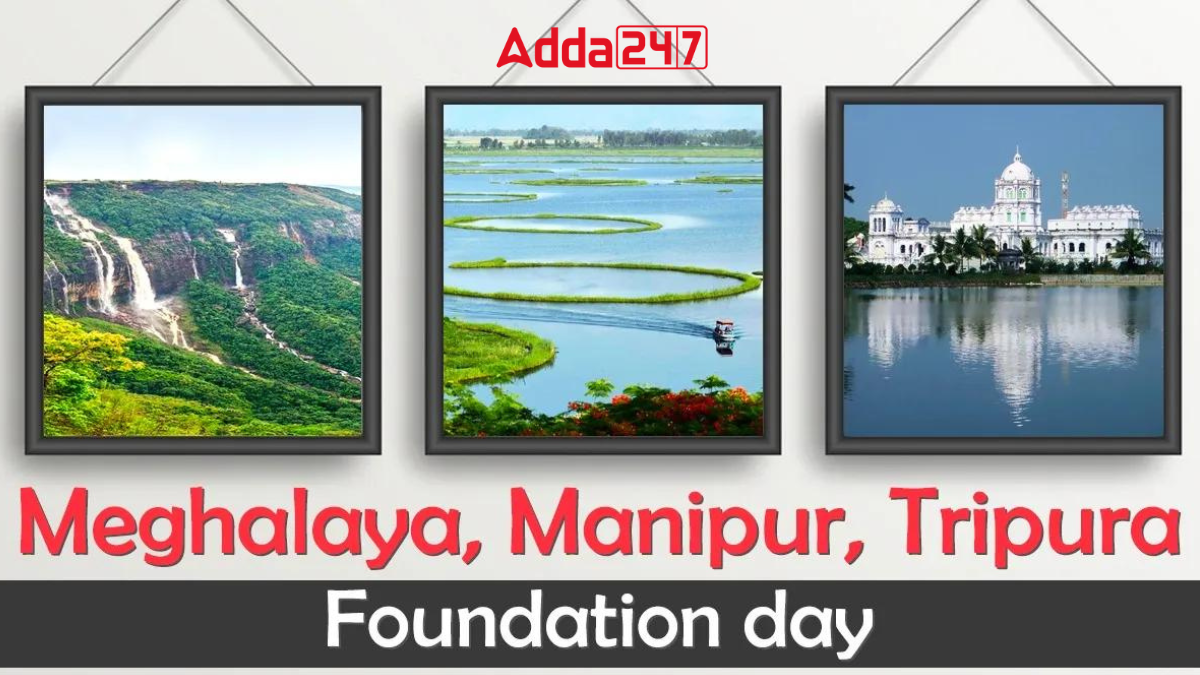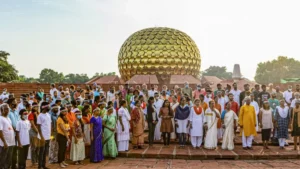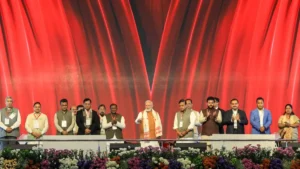January 21st, 2024, marks a momentous occasion for the northeastern region of India – the 52nd anniversary of statehood for Tripura, Manipur, and Meghalaya. Each state, with its own vibrant culture, unique history, and breathtaking landscapes, contributes to a rich tapestry that enhances the nation’s identity.
Statehood Day Celebrations
Statehood Day is celebrated with great fervor across all three states. Cultural programs, parades, musical performances, and traditional dances showcase the rich heritage of each region. People take pride in their shared history and the unique character that each state brings to the Indian union.
The Journey to Statehood: A Historical Perspective
On January 21, 1972, the states of Tripura, Manipur, and Meghalaya became full-fledged states under the North Eastern Region (Re-organisation) Act, 1971. The princely states of Tripura and Manipur were merged with India in October 1949. Let us delve into the details of the State Reorganisation of the Northeast.
Assam Plains, Hill Districts, and the Evolution of Nagaland
At the time of independence, the North East comprised the Assam plains, hill districts, and North Eastern Frontier Tracts (NEFT) of the North-Eastern border. Manipur and Tripura states were granted Union Territory status in 1949. Nagaland achieved statehood on December 1, 1963.
Northeast India’s Path to Autonomy and Statehood
Meghalaya became an autonomous state through the Assam Reorganisation (Meghalaya) Act 1969. Finally, in 1972, Tripura and Meghalaya were granted full statehood by the North East Reorganisation Act. According to the Mizo Accord of 1986, Mizoram emerged as a full-fledged state in 1987. In the same year, NEFA (Arunachal Pradesh) was granted full-fledged statehood.
Discovering Tripura: A Tapestry of Diversity in 10,491 Square Kilometers
Covering around 10,491 km2, Tripura is bordered by Bangladesh to the north, south, and west, and Assam and Mizoram to the east. The Hindu Bengali majority coexists with diverse indigenous communities. The tropical savannah climate, seasonal rains, and lush forests make Tripura unique. Rich in primate species, the state boasts various traditional dances and vibrant celebrations.
Imphal: Heart of Manipur’s Rich Heritage and Diverse Landscape
Imphal, also known as Kangleipak or Sanaleibak, serves as the capital of Manipur. Bordered by Nagaland, Mizoram, Assam, and Myanmar, Manipur has a diverse population. Under British Rule, Maharaja Budhachandra signed a Treaty of Accession in 1949, merging the kingdom into India. Manipur’s agrarian economy and hydroelectric power potential add to its significance, and it is the birthplace of Manipuri dance.
Meghalaya: The Abode of Clouds and Lush Landscapes
Meaning “the abode of clouds” in Sanskrit, Meghalaya covers 22,430 square kilometers. Originally part of Assam, it became a separate state in 1972. Shillong, the capital, is surrounded by Khasi, Garo, and Jaintia hills. Khasi, Pnar, Garo, and English are the languages spoken. Meghalaya, the wettest region of India, is predominantly covered in forests.
On this significant day, let us celebrate the unique heritage and contributions of Tripura, Manipur, and Meghalaya to the diverse mosaic of India.
Important Questions Related to Exams
1. Which state in the northeastern region was originally part of Assam before becoming a separate state in 1972?
2. In which year did Tripura and Manipur become full-fledged states under the North East Reorganisation Act?
Kindly share your responses in the comment section!!




 Tamil Nadu Government Unveils Otter Cons...
Tamil Nadu Government Unveils Otter Cons...
 Auroville Foundation May Gain Institutio...
Auroville Foundation May Gain Institutio...
 PM Modi Opens Nature Themed Terminal at ...
PM Modi Opens Nature Themed Terminal at ...







